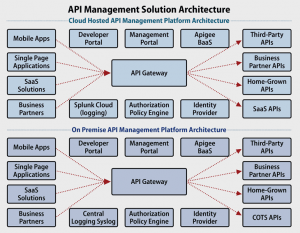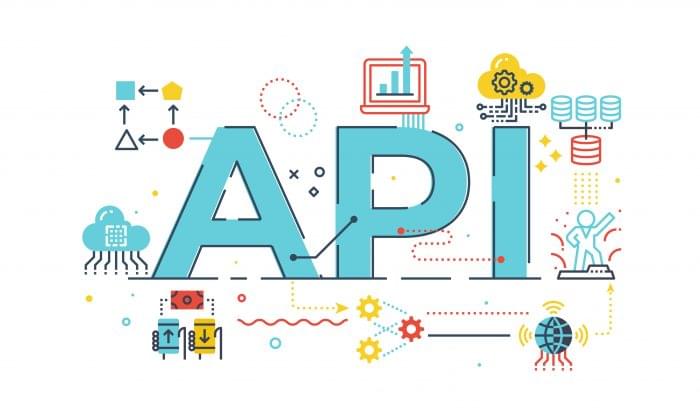Siloed information is the last thing your business wants. To be able to scale, interoperability between separate systems is critical. As your business invests in more applications to function properly, those applications need to communicate.
This is where an API comes in — a software intermediary that allows two applications to talk to each other. (Think of it as a digital handshake.) If you’ve got a high volume of API connections, it becomes difficult to manage. API management solutions help create, publish, and manage these API connections.
These tools go beyond providing a place for your APIs to live. They enable businesses to bridge legacy systems with modern applications, meaning the legacy system can talk to the cloud without modification or migration. They also monitor how a company connects with third party offerings, from analytics to security.
Table of contents
- Why do I need an API management tool?
- Top 5 API management tool capabilities
- Top API management tools
- Looking for an API management tool?
Why do I need an API management tool?
Most businesses are familiar with using APIs in their daily operations, but for expanding companies, managing a growing number of integrations across a growing number of applications is time consuming. An API management tool will save time by allowing for greater flexibility when reusing the functionality of API integrations. Other benefits include:
- Creating a flexible and dynamic ecosystem
- Increasing speed by rapidly creating new digital assets
- Leveraging the value of existing legacy systems
- Making data-driven decisions through analytics and insight
- Creating a better user experience
The critical element of an API management tool is the ability to build APIs with the specific
needed requirements unique to each related application and make sure both public and internal APIs are properly integrated. At the very minimum, it should provide access control, rate limits, and usage policies.
Your basic bundle of API management features include routing and proxying, transformation of data, dashboard and analytics, policies and restrictions, and development tools like documentation generators. Beyond those features, here are the top 5 capabilities your API management tool should include.
If you’re looking for a tool to manage your APIs, use our IT Software Product Selection Tool. Tell us what you need in a software system, and we’ll send you a list of recommended tools for free.
Recommended reading: How to Use an API: Just the Basics
The top 5 API management tool capabilities
1. API gateways
An API gateway is the single most important aspect of an API management solution as it’s the single point of entry for all clients. API gateways handle all routing requests, composition, and protocol translations between the client and the third party service they’re connected to.
Because an API gateway is so important, any third-party API provider that doesn’t use one should be avoided at all costs. Gateways also play an essential role in securing API connections by deploying key security authentication and enforcement protocols, such as TLS encryption and OAuth technology standards.
To give you an idea about just how important API gateways are, here’s a chart that illustrates an API management solution’s architecture.

Image Credit from Datamation
2. Developer portal
A developer portal has many uses, but the main use is to provide a hub for developers to access and share API documentation. This encourages them to discover, explore, purchase, profit from, and test APIs. This portal is an intrinsic part of streamlining communication between teams.
API developer portals are typically built on a content management system (CMS) with check in/check out, documentation, management, search, read, and test capabilities. Other helpful features include FAQ pages and chat forums for both the internal and external developer community, with the ability to have separate access between the two.
3. API lifecycle management
API Lifecycle management provides a holistic view of how to manage the different stages of an API, from creation to retirement. This capability provides a sustainable system for building, testing, onboarding, and managing APIs while making sure version control is kept in check.
The 10 key stages of an API lifecycle are:
- Manage & observe the usage of APIs
- Create
- Secure
- Document
- Test
- Version
- Publish
- Promote
- Monetize
- Retirement
4. Analytics engine
An analytics engine provides insight for business owners, operational administrators, and developers into how much traffic APIs are getting, what drives that traffic, and at what level of performance this is being done. It also plays a key role in diagnosing and troubleshooting integration issues.
An analytics engine has the functionality to analyze historical data, detect usage patterns, and create synthetic transactions to test API performance and behavior. The information gathered via this engine gives your business the opportunity to optimize the API offering within the overall continuous improvement process. Who doesn’t want that?
5. API monetization
API monetization enables API providers to package, price, and publish their APIs so that partners and developers can purchase access or take part in revenue sharing. It’s not just about how you’ll generate revenue via your API; it’s also about how you’ll keep your API in operation for consumers.
If you’re looking into an API management tool, the chances are that you have a healthy business model. If you don’t already, make sure you’re providing a framework for your monetization goals as you’re developing your APIs.
You can monetize the access to the microservices behind the APIs through usage contracts. An API management tool allows you to define usage contracts based on metrics such as the number of API calls. Consumers can be segmented and offered different access tiers.
Top API management tools
If you already know how to use an API and what capabilities you need in a management system, check out this list of the best API management tools.
1 Domo
Build a modern business, driven by data. Connect to any data source to bring your data together into one unified view, then make analytics available to drive insight-based actions—all while maintaining security and control. Domo serves enterprise customers in all industries looking to manage their entire organization from a single platform.
2 Mulesoft
Use Mulesoft's Anypoint Platform to quickly design, test, and publish API products. Manage APIs, monitor and analyze usage, control access, and protect sensitive data with security policies. With Anypoint API Community Manager, transform portals into digital experiences that turn developers into evangelists by providing self-service API documentation, forums, support, and the personalized resources developers need to be successful.
3 Apigee
Package your digital assets as APIs and monetize to unlock new revenue streams for your business with Apigee. Apigee supports the creation and configuration of a broad range of API packages, revenue models, reports, payment gateways, and developer portal integrations. These capabilities help API providers launch fast and gain value from their APIs sooner. Apply AI to your historical API metadata to predict the behavior of your APIs and automatically detect anomalies in real time.
4 Software AG
Software AG's webMethods API Management allows you to reap the benefits of the API economy by managing the entire process of planning, designing, developing and securely exposing your APIs to external developers, partner and consumers. This Software AG solution provides an end-to-end tool chain, enabling you to leverage your current SOA investments for new API initiatives to get more value from your current assets while saving time and reducing the costs of development and training.
5 IBM API Connect
Expertly secure and manage your entire API ecosystem across multiple clouds — including boosting socialization and monetization efforts — with industry-leading IBM API Connect. IBM API Connect® is a complete, intuitive and scalable API platform that lets you create, expose, manage and monetize APIs across clouds. This means you and your customers can power digital applications and spur innovation. Accelerate API developer productivity with simplified methods and a built-in toolkit.
6 Kong
Kong provides comprehensive visibility and empowers application teams to provide consistent security and governance across APIs and services. Empower your development teams to add fine-grained security and traffic policies that provide consistency across services and APIs. Use artificial intelligence to autonomously monitor traffic for anomalies to proactively identify performance and security incidents.
7 Axway
API Gateway provides a comprehensive platform for managing, delivering, and securing APIs. It provides integration, acceleration, governance, and security for Web API and SOA-based systems. Axway offers the full lifecycle API management for the next generation, as well as automating the discovery, reuse, and governance of all your APIs across multiple gateways, environments, and vendor solutions.
8 Postman
Postman is a collaboration platform for API development. Postman's features simplify each step of building an API and streamline collaboration so you can create better APIs. Quickly and easily send REST, SOAP, and GraphQL requests directly within Postman. Automate manual tests and integrate them into your CI/CD pipeline to ensure that any code changes won't break the API in production. Stay up-to-date on the health of your API by checking performance and response times at scheduled intervals.
9 Cloud Elements
Cloud Elements is the first API Integration Platform to virtualize APIs into unified data models that eliminate brittle, point-to-point connections. With your data at the center of a customized Application Ecosystem, you get a cost, scale and performance advantage so you can seize new opportunities, create new experiences and discover what’s next.
10 SAP Integration Suite
Publish, promote, and oversee APIs in a secure and scalable environment with the SAP API Management capability. Empower developer communities to monetize data and digital assets in new channels, devices, and UIs. Encourage more productive collaboration through the entire business ecosystem. Managing and monitoring APIs across various data platforms with real-time analytics, the API Management capability promotes co-innovation among employees, partners, and the developer community.
11 Workato
Workato is a single platform used to integrate apps and automate workflows without compromising security and governance. Rapidly accelerate growth by being automation-first across your organization. It enables companies to drive real time outcomes from business events. There is no coding required, and the platform utilizes Machine Learning and patented technology to make the creation and implementation of automations 10X faster than traditional platforms.
Looking for an API management tool?
An API management tool gives you better dependability, flexibility, quality, and speed. If you’re looking for one that suits your business needs, use our IT Software Solutions Product Selection Tool. Tell us your specifications and we’ll give you a list of recommended solutions.












